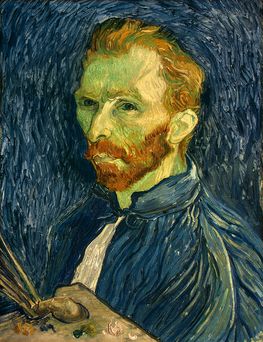 |
 |
[M]y aim in my life is to make pictures and drawings, as many
and as well as I can; then at the end of my life, I hope to pass
away, looking back with love and tender regret, and thinking, "Oh,
the pictures I might have made!"—Letter to Theo van Gogh (Vincent's
brother), November 19, 1883
Do you think "mad genius" when you hear the name Vincent van
Gogh? You are not alone. Van Gogh's life was complicated by early
failures, personal eccentricities, and an adult diagnosis of epilepsy.
But he also succeeded with a daunting achievement—becoming a great
artist.
During his lifetime Vincent van Gogh was scarcely appreciated—and he
sold only one painting. A century after his death, however, Van Gogh's paintings
of sunflowers, his textured landscapes, and his intense portraits and self-portraits—all
expressive and emotional in color, with thick and energetic brushwork—are
among the most recognized paintings on the planet.
|
|
Vincent van Gogh, Self-Portrait, 1889 |
|
|
 |
 |
 |
|
Van Gogh spent his childhood in the tiny Dutch town of Zundert, in the southern
Netherlands, where his father was a minister. Vincent recalled these as golden
years, made secure by his close-knit family and rock-solid religious faith.
Then, at age 11, Vincent's cozy life unraveled. Sent to boarding school,
he lasted less than two years; he would never finish his secondary education.
At age 16, however, he entered a world that—though difficult for him—was
his introduction to art. One of his uncles got him a job at a firm selling
art; for the next seven years, he worked for the company's branches
in The Hague, London, and Paris. Feeling lonely and separated from family and
home, Vincent passed these adolescent and early adult years immersed in reading.
He plunged into artists' biographies, books about art, and philosophy—copying
favorite passages that consoled him.
|
|
 |
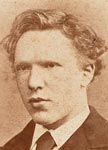
Vincent van Gogh at the age of 19 |
|
 |
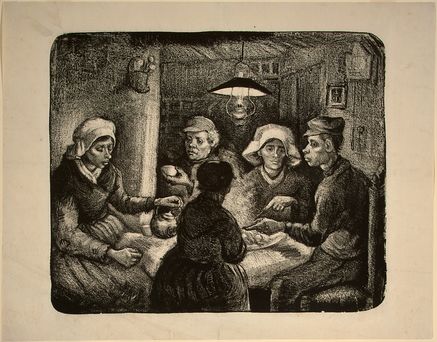 |
 |
He started by painting things he knew well: scenes of Dutch peasant life created
in earth tones that literally express the dirt-poor existence of the rural
working class. Within three years, Vincent moved to Paris, where he lived with
his brother Theo (now also an art dealer) and experimented with the lighter
colors and touch of the impressionist
style.
He admired the unusual viewpoints and strong colors of Japanese prints, which
were then the rage in Paris. But typical of Vincent, he became exhausted through
overwork and too many late nights in the city. He decided to move to Arles,
an ancient town in the south of France, where he hoped the warm climate and
bright colors would relax and inspire him.
|
Vincent van Gogh, Potato Eaters, 1885 |
|
|
 |
 |
 |
|
Arles delivered a lot of this promise. Vincent completed nearly 200 works
in his two years there. He worked feverishly and his skills advanced at a fast
pace. Vincent developed a unique style of intense, active brushwork and saturated,
complementary colors. In Arles, he painted his most famous images, such as The Starry
Night, his sunflowers, and his portraits of local residents and his self-portraits.
|
 |
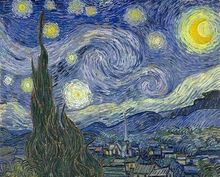 |
|
|
Vincent van Gogh, The Starry Night, 1889 |
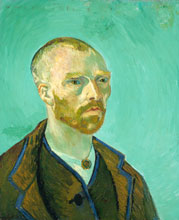 |
 |
Sadly, along with his feverish work came a form of epilepsy that caused
alarming behavior, such as Vincent's desperate act of cutting off
his earlobe after arguing with visiting painter Paul Gauguin. After
suffering repeated breakdowns, Vincent committed himself to a sanatorium
in nearby Saint-Rémy.
He painted whenever he could and believed he would improve only by making
art. By the time he died at age 37, Vincent had written hundreds
of letters—one
of the greatest bodies of personal commentary about the aims of
art and the artistic process—and produced an astounding body of work
comprising some 900 paintings and more than 1,000 drawings.
|
Vincent van Gogh, Self-Portrait Dedicated to Paul Gauguin, 1888 |
|
|
He had struggled and succeeded at more than he dreamed when he wrote that
he hoped to offer the world "some memento in the form of drawings of paintings
. . . to express human feeling." (Letter to Theo, c. August 4–8,
1883)
|
 |



|



